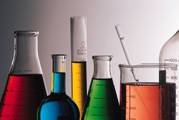|
Quality Environmental Laboratory Services |
|
Castle Analytical Laboratory |

|
Home | About Us | Contact Us | Analytical Services | Related Links | FAQs | Forms |
|
Home |
|
About Us |
|
Contact Us |
|
Analytical Services |
|
Related Links |
|
FAQs |
|
Forms |
|
Frequently Asked Questions (FAQs) |
|
The information on this page is for basic information only.† Please feel free to call for additional guidance. |
|
To contact us: |
|
Phone: 209-384-2930 Fax: 209-384-1507 E-mail: main@castle-lab.com |

|
© 2012 Castle Analytical Laboratory.†† Disclaimer: This website is for informational purposes only. †It is recommended the information contained is this website be validated for accuracy. |
|
1.What is your standard turnaround time? The standard turnaround time is 5 working days excluding weekends and holidays.† For expedited turnaround times additional fees are charged, typically 2 times the normal fee for 24 to 48 hours and 1.5 times the normal fee for 3-day turns.† For an extra fee emergency services are available for PCB analysis. |
|
2. Where are you located? In the Central Valley of California, within two miles of Highway 99.† Taking the Buhach exit follow the signs toward Castle Airport.† Click here to see Map. |
|
3. What analysis should I do? Many times this depends on the purpose of the testing, whether itís for drinking purposes, disposal, site evaluation, hazardous waste determinations etc.† We can give some guidelines but typically you will need to ask a regulator in your area or a disposal site.† |
|
4. Do you do drug analysis, DNA testing, blood testing or urine analysis? No, check your local phone book. |
|
5. Do you test home well water? Or Is my water safe to drink? At this time Castle Analytical Laboratory is not certified to analyze drinking water. The best option is to call the Environmental Health Department in your specific county and get their recommendations on what tests to run and what local lab has the correct certifications. |
|
6. Do you collect samples? We typically do not collect samples, but we will be happy to recommend a firm that specializes in your area of need. |
|
7.What kind of containers do I use and how do I get them? We can typically supply containers for your analysis needs, give us a call and we can let you know what kind of containers and set up a shipment.† Please allow us time for shipping and handling. |
|
8. What is the holding time for the analysis I need? Please call for assistance.† Some analysis have 48 hour or less holding times.† Sampling for test with short hold times should take weekend and shipping times into consideration.†† Typical examples of short hold time analysis are Volatile Air Samples (Tedlar Bags), Filtration, pH, Dissolved Oxygen, Total Residual Chlorine, Coliform (BacT), Hexavalent Chromium, BOD, Nitrite, Nitrate (un-preserved), Turbidity, Color, MBAS, ortho-Phosphate, and settleable Matter. |
|
9. Are my results bad and what do they mean? Castle Analytical can help with understanding how to read your report, just give us a call.† However, since all projects are different and may have different regulatory requirements we can not specify whether your results are within regulatory limits. |
|
10. Do you do pick-ups? We have a limited area in California (Tulare to Turlock along highway 99) that we pick-up samples at no charge.† We usually pick-up samples in the morning. Other arrangements outside our area and usual times may be accommodated, please give us a call.† We also accept all shipping company deliveries. |
|
11. When are you open for sample drop-off? Our regular hours are M-F 8am to 5pm.† Please call to make other arrangements. |
|
12.† Do you require a minimum charge? We do not require a minimum charge.† However if you are not a current client we will ask for payment in advance. |
|
13. Why are reporting limits elevated in a result but are non-detect (ND)? Sometimes due to large amounts of† background interferences a sample will have to be diluted.† An example would be a sample with high levels of old gasoline or diesel being run for BTEX.† This sample cannot be run undiluted in instrumentation even though the levels of BTEX may be undetectable at that dilution.† Other matrix interferences, depending on the test, may be high salt content, dead organic matter, or extreme pH. |
|
14. What is the Quality Control Report? For most analyses we run specific quality control samples per batch of 20 samples or less:
Blank - to test that our instrumentation and chemicals are free of the target analytes. Laboratory Control Spike (LCS) - an analyte free sample spiked with a known amount of analyte.††† Matrix Spike (MS) and Matrix Spike Duplicate (MSD) - a batch sample spiked with a known amount of analyte. Surrogate - A non-target analyte spiked into all QC and batch samples to test for extraction efficiency.
These results are summarized on quality control reports.† Sample surrogate recoveries are reported along with sample results. |
|
15.† What is the difference between TTLC, STLC and TCLP? TTLC†† (Total Threshold Limit Concentration) is a State of California hazardous waste limit. This limit applies to the total amount of analyte in mg/Kg which makes the waste classified as hazardous. STLC†† (Soluble Threshold Limit Concentration) is a State of California hazardous waste limit.† For STLCs a sample is agitated in slightly acidic water to see how much contamination would be released into the water (simulating acid rain).†† The water is then tested for potential contamination reported in mg/L. TCLP†† (Toxicity Characteristic Leaching Potential) is a Federal Hazardous waste limit. A TCLP is similar to an† STLC but using a solution with slightly different acidic properties and agitation time.
|
|
|